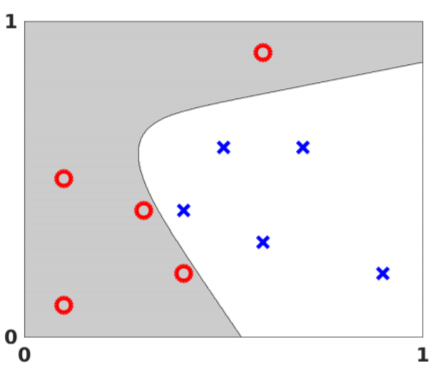Hallo again.
I studied your tutoril. I can say it’s helpful enough.
I made think I have make some progress with my problem.
Here’s my model I built, I have a NN with 2 hidden layers and I want to use the sigmoid for my prediction. I have created the dataset with the points and the class 0 or 1 but I have come to a dead end.
Can you help please help me? Whats wrong? I can’t understand why the AttributeError: ‘data’ object has no attribute ‘len’ come on.
Also do you think that my code is close enough to the solution or I have messed up? Thank you in advance!
import torch
import numpy as np
import matplotlib.pyplot as plt
import torch.nn as nn
import torch.nn.functional as F
from torch.utils.data import Dataset, DataLoader
class data():
def __init__(self):
x=np.array([[0.1,0.1], [0.3,0.4] , [0.1,0.5] , [0.6,0.9] , [0.4,0.2] , [0.6,0.3] , [0.5,0.6] , [0.9,0.2] , [0.4,0.4] ,[0.7,0.6]])
y=np.array([1,1,1,1,1,0,0,0,0,0])
self.y = torch.from_numpy(y).type(torch.LongTensor)
self.x = torch.from_numpy(x).type(torch.FloatTensor)
def __getitem__(self, index):
return self.x[index], self.y[index]
def __len__(self):
return self.len
class Net(nn.Module):
def __init__(self, D_in=2, H1=2, H2=3, D_out=2):
super(Net, self).__init__()
self.linear1 = nn.Linear(D_in, H1)
self.linear2 = nn.Linear(H1, H2)
self.linear3 = nn.Linear(H2, D_out)
# Prediction
def forward(self, x):
x = torch.sigmoid(self.linear1(x))
x = torch.sigmoid(self.linear2(x))
x = torch.sigmoid(self.linear3(x))
return x
def train(data_set, model, criterion, train_loader, optimizer, epochs=100):
LOSS = []
ACC = []
for epoch in range(epochs):
for x, y in train_loader:
optimizer.zero_grad()
yhat = model(x)
loss = criterion(yhat, y)
optimizer.zero_grad()
loss.backward()
optimizer.step()
LOSS.append(loss.item())
ACC.append(accuracy(model, data_set))
return LOSS
data_set=data()
model = Net()
learning_rate = 0.10
optimizer = torch.optim.SGD(model.parameters() ,lr=learning_rate)
train_loader = DataLoader(dataset=data_set, batch_size=1)
criterion = nn.MSELoss()
LOSS = train(data_set, model, criterion, train_loader, optimizer, epochs=100)
print('arrived here')
